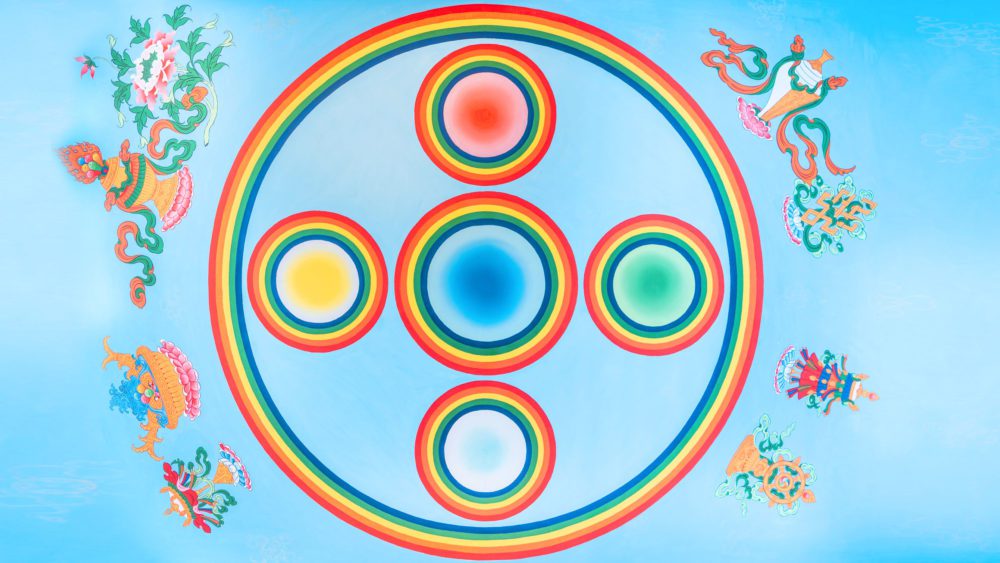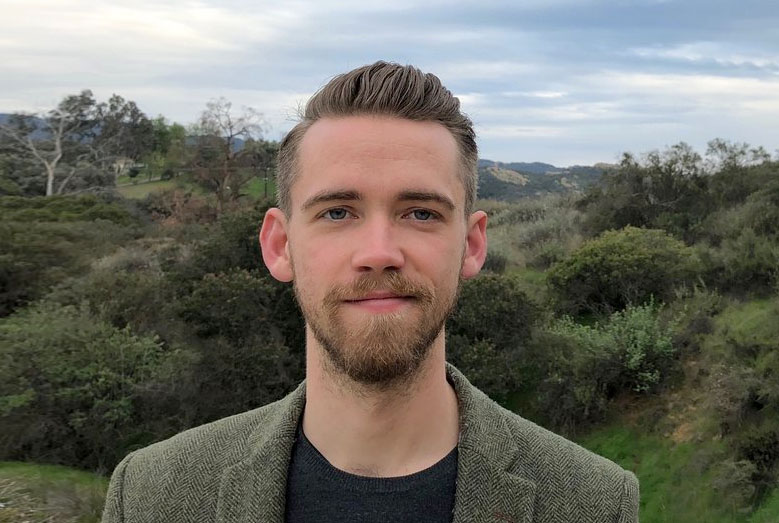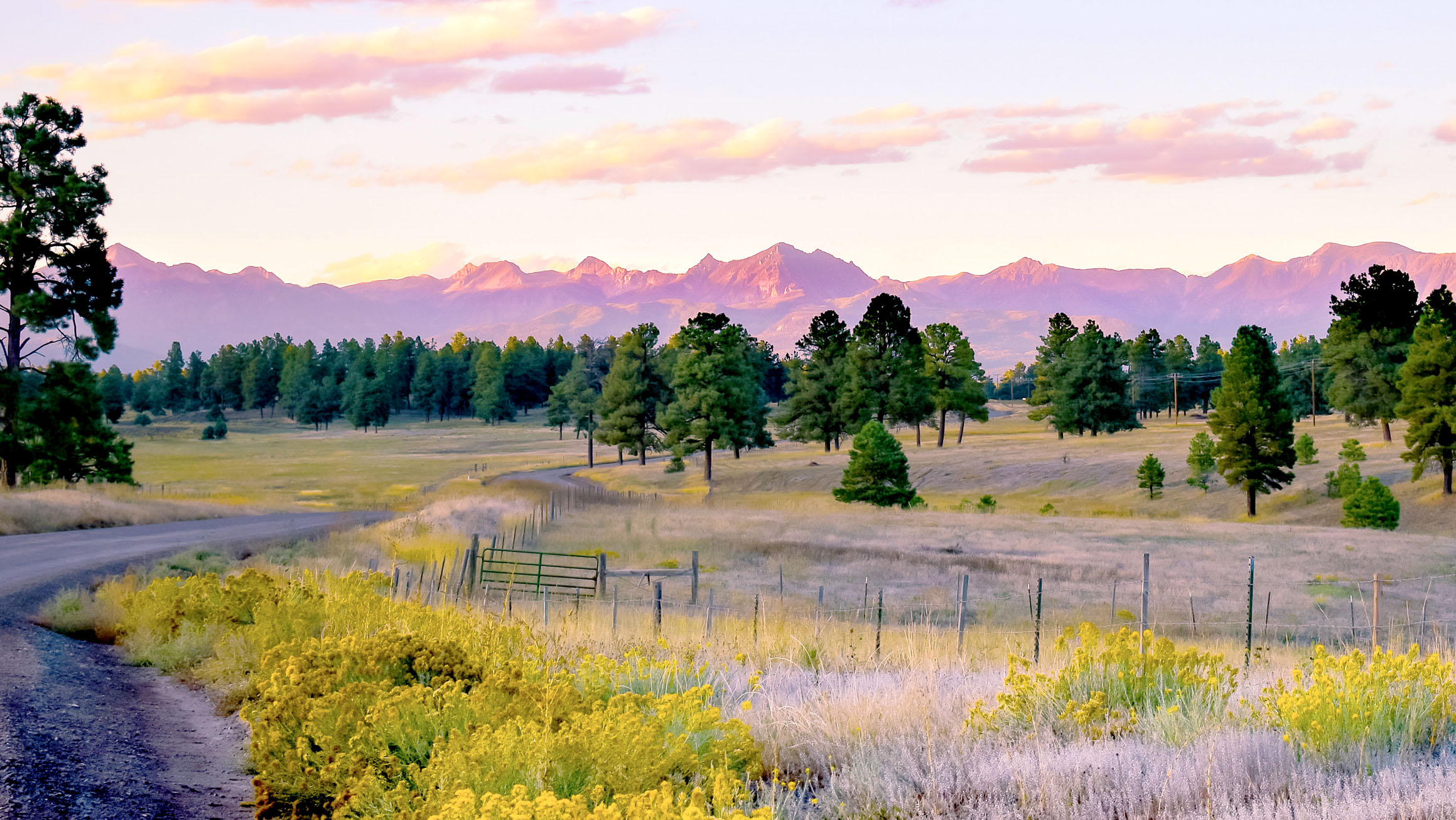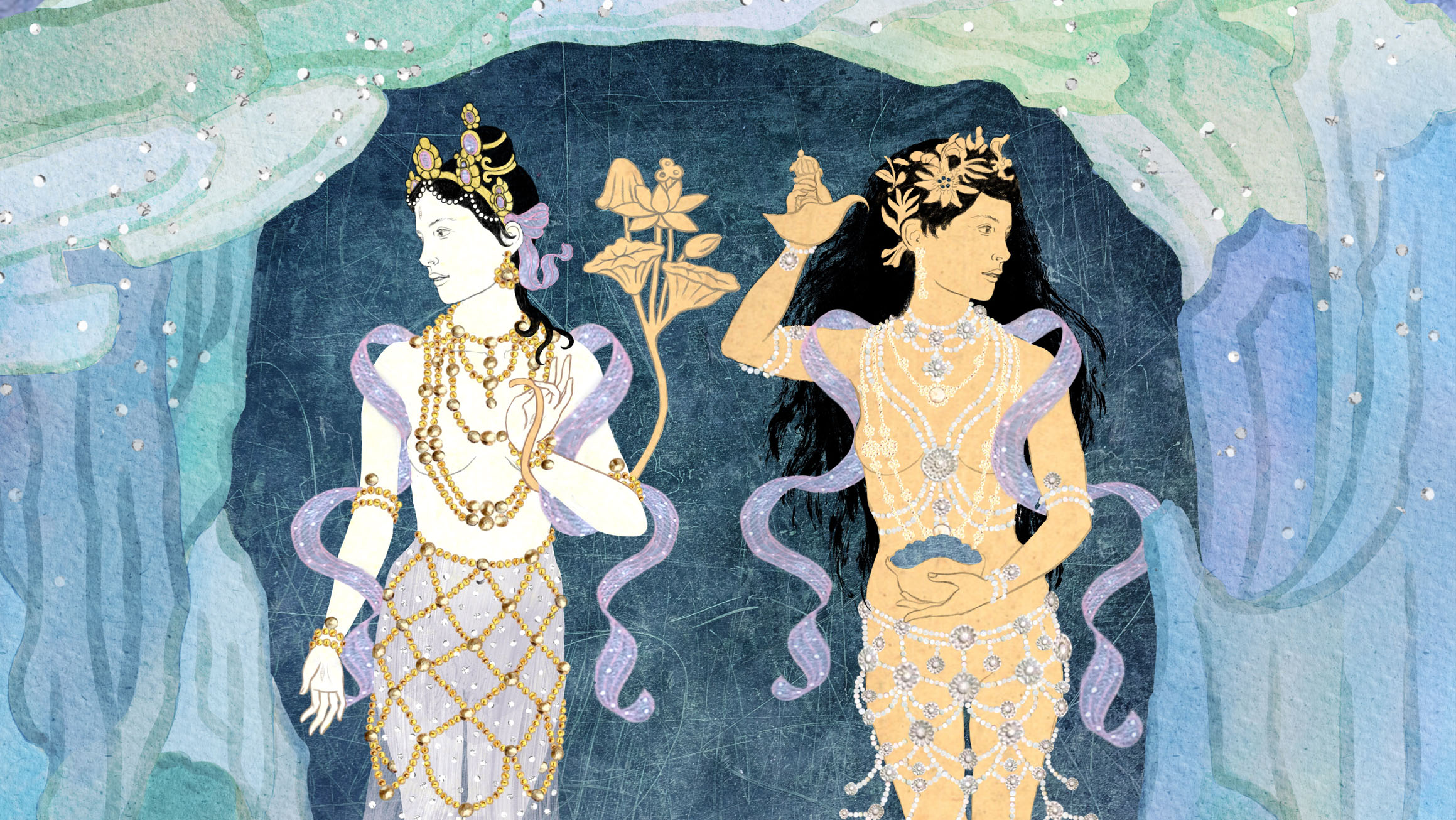This blog post is offered in celebration of Pride Month, written by Erik Jampa Andersson, longtime fixture in the Tara Mandala community.
I knew I was Buddhist long before I knew I was gay. When I was just 11 years old, and a student at a small Seventh-Day Adventist school in Durango, Colorado, I came to the rather definitive conclusion that I was no longer going to identify as a Christian. This decision came as no surprise to my friends or family, who always knew me to have a particular affinity for obscure mythologies and alternative philosophies, as well as an enduring penchant for going against the grain. Something deep inside me knew that the systems into which I was born were not going to provide me with the answers I needed. After asserting myself as an atheist, I was eventually led to the world of Buddhism. A book on Zen meditation inspired me to scour the local library for every Buddhist work I could possibly find. While my friends were quite content to read comic books and play video games, I spent my free time perusing the Lalitavistara Sūtra, and being whisked away to the Himalayas in the evocative tales of The Lotus-Born. Before long, without ever having met a Tibetan Buddhist in my life, I announced to my parents that I was somehow meant to be an adherent of the Nyingma school of Tibetan Buddhism. I never would have guessed, 18 years ago, that this rather naïve assertion would form the trajectory of my entire life.
“Coming out” as Buddhist in a tight-knit Christian school was met with a predictably harsh deal of resistance. I was relentlessly taunted by my peers, who enjoyed telling me that I would burn in hell for following a false god like the Buddha. But within the alienation I discovered a wellspring of inner resilience. I decided to respond to criticism with facts and research, and started carrying around a notepad filled with biblical incongruences, ethical problems, and theological paradoxes that I would use to challenge the provocations of my teachers and classmates. On one occasion, I was suspended for challenging the pastor in our religion class – a badge of honor I still wear with great #pride.
I began my search for a teacher at 14, and was quickly led to Lama Tsultrim and Tara Mandala. Just an hour and half from my little remote mountain town, I was shocked to learn that there was not only a bonafide Tibetan Buddhist retreat center, but it was also rooted in the Nyingma tradition! The odds seemed wholly unbelievable, and I begged my parents to take me there “to find a teacher.” An unannounced off-season visit in 2005 led me to, quite accidentally, meet Lama Tsultrim for the first time, and I immediately knew I had finally found my spiritual home.
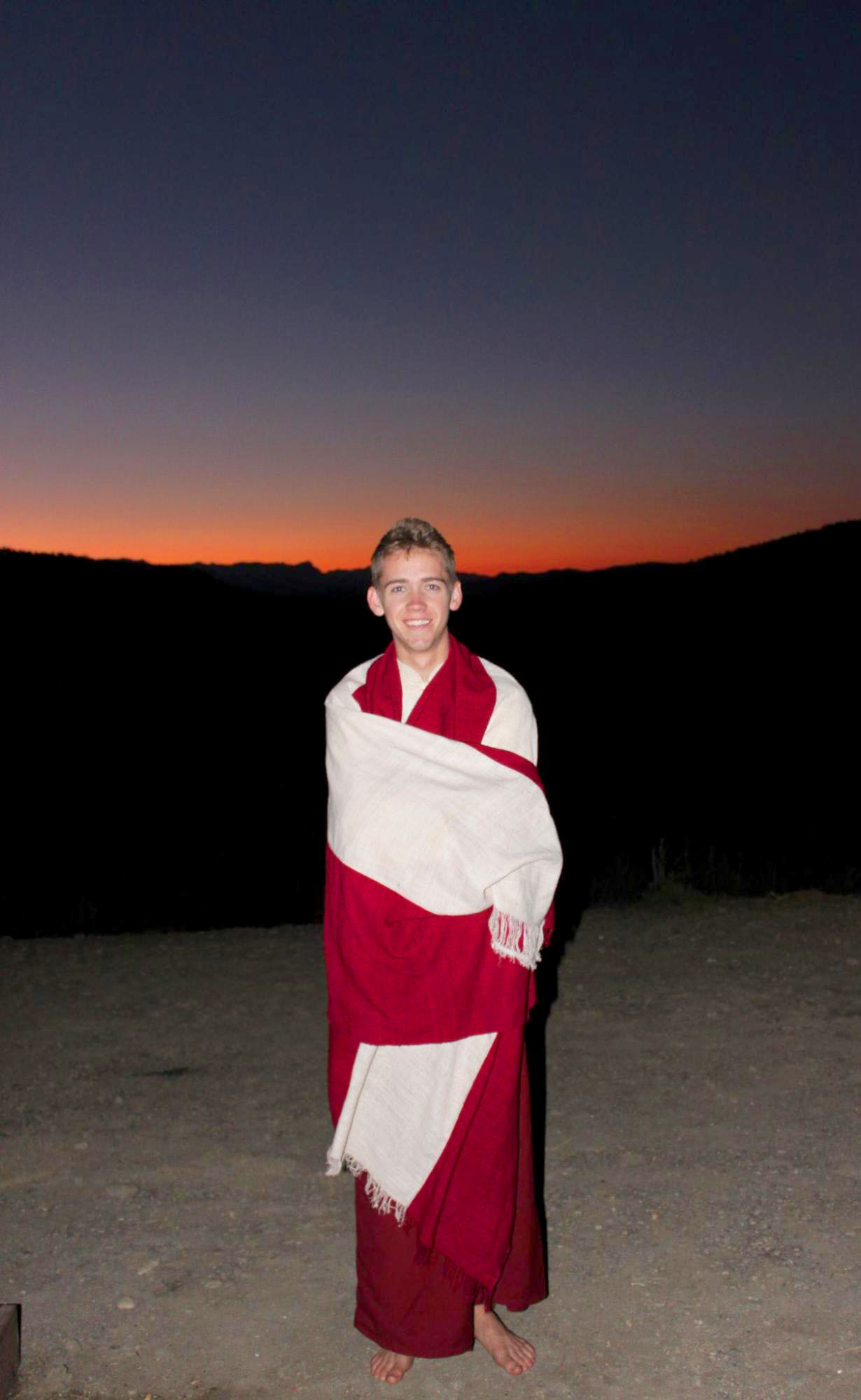
(Me at the first White Dakini Drubchen, age 18)
Coming out as gay, however, was a rather different and more traumatic experience. Despite being called “gay” and “girly” by my peers (and even their parents!) constantly throughout my childhood, it wasn’t until I was 15 that all of the clues began to fit together in my mind. But by the time I could manage to string together the words, “I’m gay”, in the space of my own brain, the proverbial cat was already well out of the bag and running amok. The shock of my sexuality was particularly hard for my parents, who had only just gotten used to dealing with a stubbornly opinionated vegetarian Buddhist son. But despite all of the strange and unfamiliar features of my life, my queerness seemed to be a far less surmountable obstacle. These were dark years, but I found valuable lifelines in theatre, friends, meditation, and Feeding Your Demons.
Despite my armor of self-assuredness, it took me a long time to feel fully authentic as a queer Buddhist practitioner. With so much tantric imagery and philosophy rooted in what felt like an overtly heteronormative dichotomy, and with a plethora of stuffy old texts insinuating that any form of sex I could possibly engage in would be a breach of the Buddhist precepts, a residual fear of damnation remained present even into my early adulthood. Even after that dissipated, it was difficult for me to wrap my head around the possibility of integrating my sexual experience and personal relationships with my practice as a tantric Buddhist. I could never be a “householder” in the literal sense, and I struggled to find any stories whatsoever of sexually embodied queer practitioners reaching any degree of liberation. I worried that my sexuality would only act as a hindrance to my spiritual development, and was left compartmentalizing my sexual identity as something to remain outside the purview of my religious identity.
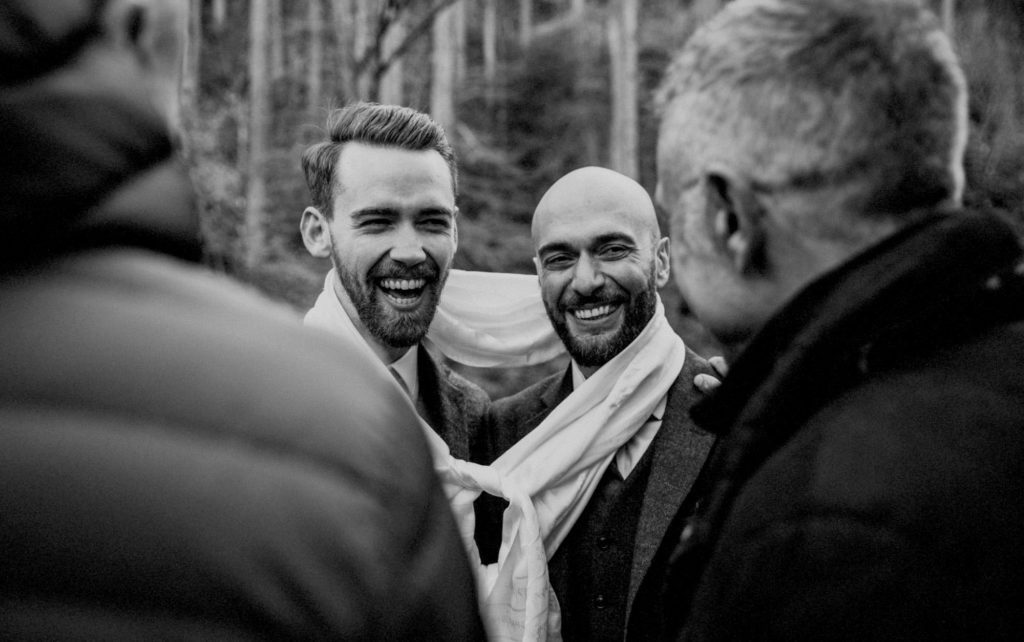
(Paolo and me on our wedding day)
My experience began to shift when I started studying Tibetan Medicine. According to the Four Tantras of Yuthok Yönten Gönpo, the principal Tibetan medical treatises inspired by Ayurvedic, Chinese, Greco-Arabic, and indigenous Tibetan healing systems, humans are classified in three broad categories or “genders.” These categories are consistent in Indian and Tibetan literature, and one can see that as early as the Carakasamhitā (one of the earliest Ayurvedic works) there was at least a rudimentary framework for this so-called ‘third gender.’
The language used to discuss gender varies immensely across Indian and Tibetan materials. Some terminology is distinctly pejorative, misogynistic, and patriarchal, while other terminologies are far more inclusive. In the Tibetan tradition, ma ning is the word that’s generally used to describe the third gender. While its etymology is uncertain, it’s generally thought to literally mean something like “non-classified” or “non-binary,” and is often used in Tibetan materials to translate the more pejorative Sanskrit term paṇḍaka – associated with ‘unmanliness,’ perversion, voyeurism, and sexual depravity.
Unfortunately, the mere recognition that gender and sexuality are encoded to some extent from our birth – and therefore not a result of current life choices – wasn’t enough to offer queer individuals equality in early Buddhism. The monastic code (Vinaya) explains that so-called paṇḍakas are forbidden from joining the ordained Sangha, as their identity is perceived as a direct challenge to the asexual environment of the monastic clergy.
This is, however, not so much a prejudice against ‘other-gendered’ individuals as it is a coded bias against femininity. This shouldn’t be surprising, as so much of our own society’s homophobia and transphobia is fundamentally rooted in misogyny and patriarchy. In the early Buddhist scriptures, especially Vinaya literature, women are frequently portrayed as oversexed, insatiably desirous temptresses whose mysterious biology and psychology make them inferior and unreliable vessels for Buddhist practice. It was standard for women taking ordination to have their menstrual cycles assessed by senior monks for any irregularities that might identify them as a paṇḍaka, and women’s bodies were routinely regulated to a far greater degree than their male counterparts. The Buddha himself required a fair deal of convincing to even accept women into the ordained Sangha at all, and rules forbidding sexuality were intentionally established to be harsher for nuns than for monks. While a nun would be expelled from the order for experiencing any form of erotic contact with a man, a monk would only face expulsion for engaging in full vaginal intercourse.
Buddhist medical traditions, being decidedly more scientific and objective regarding human sex and gender, paint a very different and more inclusive story. Medical commentators stretching back at least 2,000 years have provided an array of schemes for understanding the third gender, with some Indian and Tibetan materials presenting up to five additional ‘sub-genders’ classified under the pandaka or ma ning experience. While most commentaries are predominantly concerned with physical characteristics, some traditional theorists lump physical sex, gender expression, and sexual orientation all into the framework of ma ning. It seems that, both in likely etymology and semantics, we might simply understand ma ning as “queer.”
According to the Four Tantras, ma ning individuals are born from a perfect balance of their parents’ reproductive essence (thig le) at the time of conception. This rather poetic explanation touches on profound paradigms of non-duality, which are further evoked by the use of the honorific term bodhisattva (byang chub sem pa) to describe ‘neutral’ inner channel systems in the sections on pulse analysis. While Yuthok never goes so far as to imply that ma ning individuals are themselves bodhisattvas, any correlation between non-heteronormativity and enlightened qualities should be rightly seen as a delightful anomaly in a world of pervasive queer demonization and condemnation.
The apparent decentralization of the cisgender male experience in spiritual and medical literature was largely due to the emergence of tantra. Tantra naturally allowed for a far greater degree of dynamism in Buddhist sexuality and gender norms, even if these didn’t always inform societal circumstances. Women were no longer seen as doctrinally inferior vessels, but as spiritually potent beings capable of equally (if not more) immense accomplishments as their male counterparts. While it would take Buddhism another 1,500 years to explicitly embrace gay, trans, gender non-binary, and intersex individuals into the sangha, tantric Buddhism is in fact quite intrinsically queer. It’s common to find male practitioners (including celibate monks) engaging in meditative self-identification as sexually embodied female yidams, and vice-versa, while accompanied by an innate understanding that gender itself is ultimately an illusion.
It’s sometimes presumed that the magic of tantra is wholly dependent upon the polar opposite energies of the masculine and feminine coming into union, but this is somewhat of a misunderstanding of nonduality. When we hear of “tantric sexuality,” especially in Buddhism, it sometimes seems like it revolves around the performance of this symbolic myth. But at its core, tantric sexuality is a practice of transforming the experiences of passion and sensory pleasure into a more profound experience of authentic great bliss. This can only occur if there is a genuine sense of arousal, love, and desire in the first place. For queer individuals to experience authentic embodiment and tangible results from their practice, it is far more helpful for us to work with our individual circumstances and orientations.
The Tibetan medical approach helped me to personally bridge the divide that seemed to exist between my spirituality and my sexual existence. Despite having a remarkable role model in Lama Tsultrim, who has worked tirelessly to dismantle gender disparities in both Buddhist institutions and approaches to doctrine, and who has also been a living example of conscious and sacred relationship in her own life, I still often felt ‘unclean’ and somewhat alien around my Tibetan and Himalayan teachers. I was once told that a dear old Tibetan teacher of mine whom I hadn’t seen in many years asked one of my friends if I had a girlfriend yet. When she told him that I’m gay, he responded, “Oh, still??” expecting that I had eventually grown out of that immature phase. Needless to say, we have a long way to go in ensuring that queer experiences are truly heard in traditional spiritual communities, and in all parts of the world. Tolerance is not the same thing as inclusion, and if we can’t find the paradigms to authentically support and welcome queer practitioners, then we need to actively work to change that. We also, naturally, need to look beyond Euroamerican communities to support and advocate for the experiences of queer people in the heartlands of Asian Buddhism.
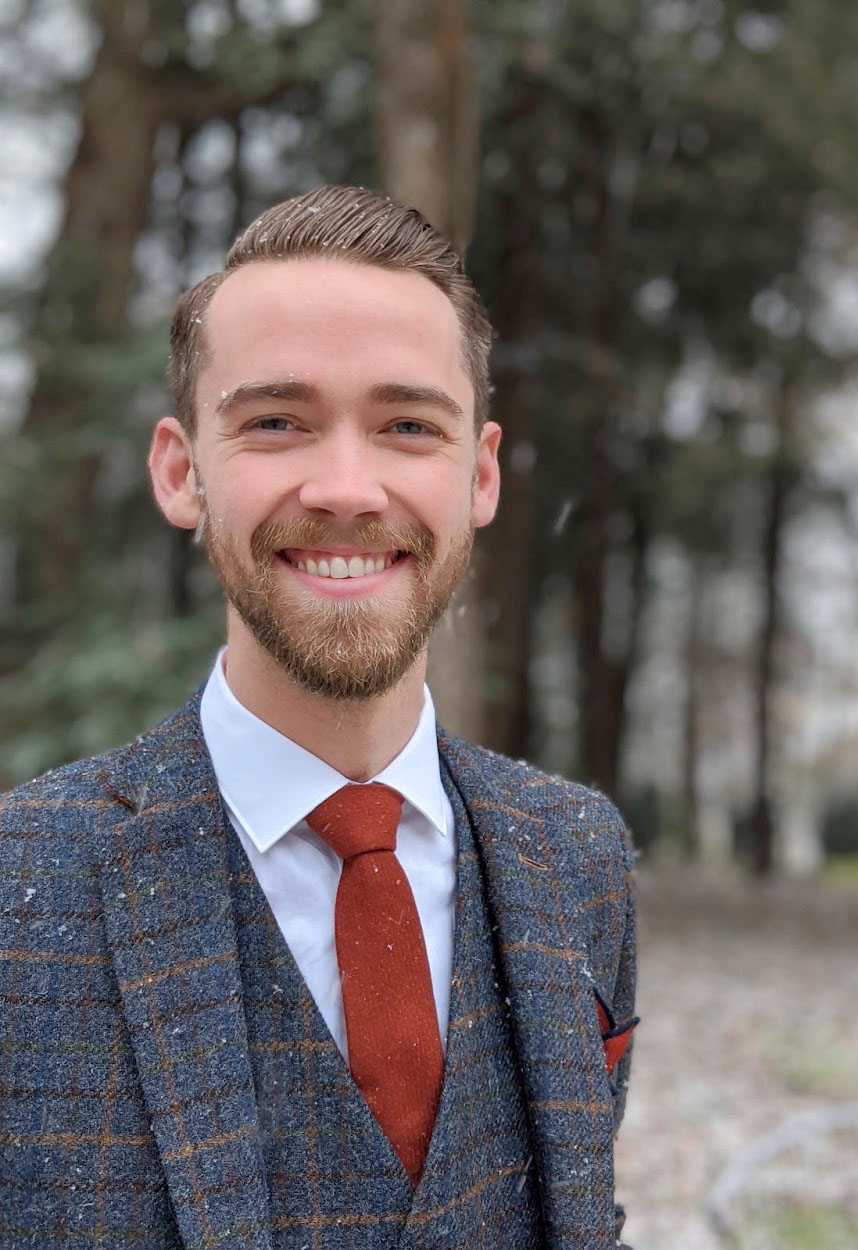
There is great reason to be optimistic, however! Buddhism is, at its core, a system of profound inquiry into the nature of inner and outer phenomena, with an unwavering dedication to the welfare of living beings. The universe that Buddhism organically constructs in its practitioners is one that effortlessly carries us to an ethic of equity, diversity, and inclusion. This is not only accomplished through poring over philosophical tenets, but through authentic experience, open-mindedness, and the fearless cultivation of radical love. We have all witnessed this core, though it’s sometimes hidden beneath the rather exhausting mire of abusive gurus, institutionalized misogyny, unconscious bias, and no shortage of spiritual bypassing. But the seeds are truly always there – we just need to continue to water them and keep them warm.
My moment of greatest hope came a few years ago, at an empowerment ceremony at Tara Mandala. While the details of this particular ceremony must remain secret out of respect for lineage standards, it’s generally known that tantric rituals can sometimes involve what we might call a ‘relationship blessing,’ which encourages non-celibate tantric practitioners to foster and sanctify spiritually-integrated mindfulness in the path of intimate partnership. Conventionally, male yogis would be presented with an item symbolizing feminine energy, and female yoginis are presented with a symbol of masculine energy, which empowers them to engage with a consort.
I have always found myself in a tricky position during these rituals – always forced to decide whether I earnestly seek the appropriate blessing (which had caused conflicts with teachers before), or whether I should keep my head down and pretend to be “ceremonially straight” for all intents and purposes. At this particular instance, I decided to simply sit out that portion of the ritual in a form of silent and respectful protest – joined by a couple of queer friends who caught wind of what was occurring. A radical and potentially cultural insensitive move, but one that felt to be right nonetheless.
The lama, a remarkably earnest middle-aged Bhutanese lineage holder who had spent over a decade in solitary retreat, noticed that I didn’t come forward for the blessing and asked why. I glanced nervously at the translator, whose eyes widened before calmly telling the lama that a few of us are gay, and therefore don’t have intimate relationships with the opposite sex. The lama nodded throughout the explanation with sympathetic curiosity and, without missing a beat, he smiled widely and said, “No problem – come!” while gesturing for us to approach his table. For my friend, a lesbian woman and long-time practitioner, he held out the blessing for female partnership, and for me, he offered the blessing for male partnership. I was deeply moved, and thanked him profusely with tears streaming down my face.
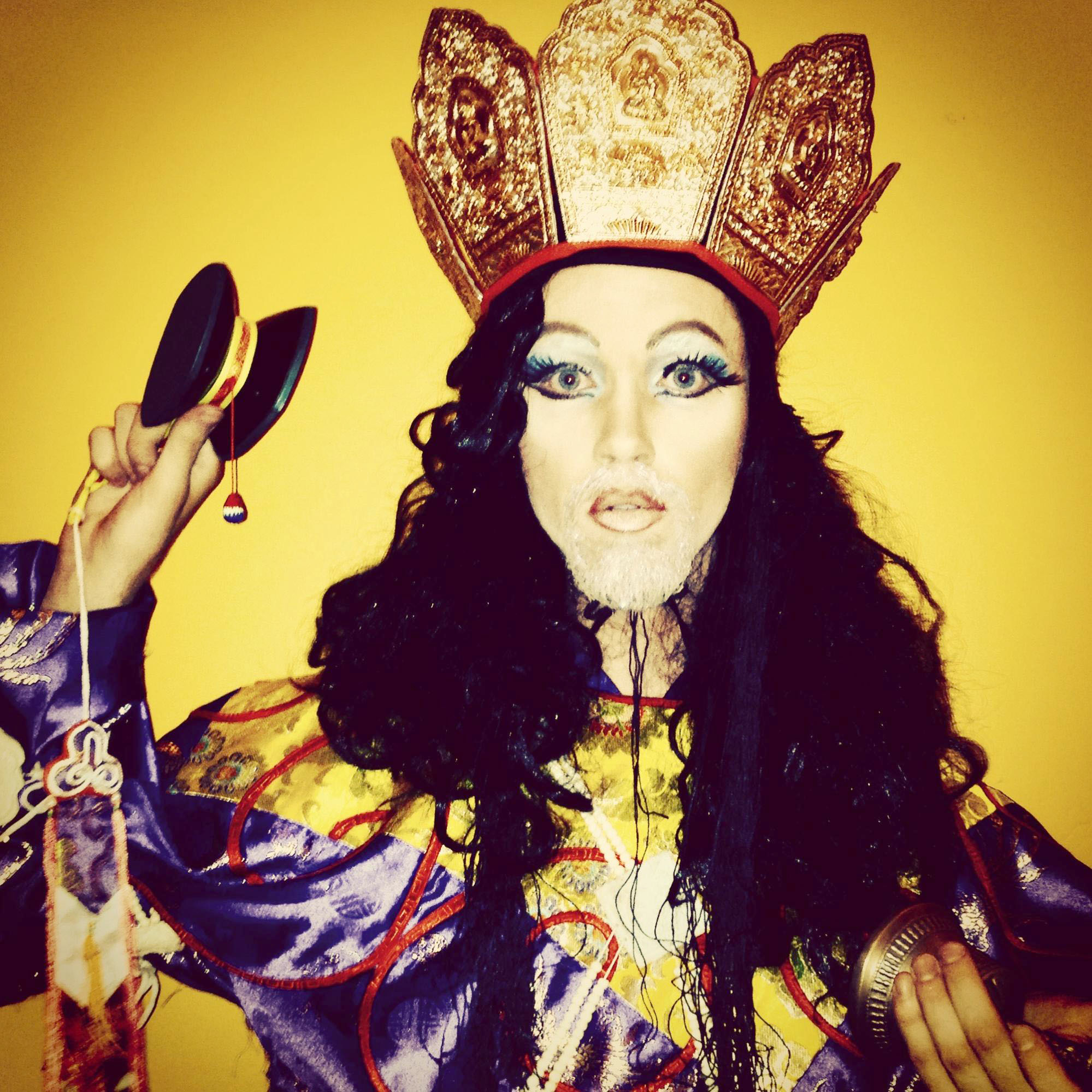
(In dakini drag at Drubchen)
But another friend stayed back, still feeling conflicted about expressing her own needs in this sacred and formal ritual environment. She explained that she identifies as bisexual, and asked the lama if it would be possible to receive both blessings. “Yes, of course!” he responded, again without any hesitation, and invited her over to receive both symbolic representations.
This was a truly remarkable moment for me. This lama had recently immigrated from a country (Bhutan) that not only had virtually no queer representation, but which actively outlawed homosexuality until just last year. It’s very likely that he had never before encountered somebody who openly identified as ‘gay,’ and yet here he was being asked to alter the instructions for a most sacred and ancient empowerment to accommodate the strange modern needs of a group of apparent foreigners. Yet he didn’t miss a beat. There wasn’t a shred of conflict or disgust in his expression. He didn’t require convincing, debate, or scriptural rationalization. He didn’t need to have a gay child or parent, to read books on queer theory, or to “spend some time praying on it” – he simply needed to bear witness. I found this to be one of the most remarkable demonstrations of the effortless love that exists when we calm our egocentric minds and open our hearts to the experience of others.
Being queer is not a curse, a stain, or a karmic punishment – it’s a blessing. Queerness forces us beyond the boundaries of our conventional cultural paradigms and mythologies, if only by virtue of the obvious discord that develops between what we’re told and what we experience. When somebody looks you in the face and tells you that being gay is a choice, a queer person knows that this is false, and it causes us to wonder about all of the other outright fallacies that populate our collective consciousness. If we can fully accept our queerness, then we quickly learn to challenge the systems that bind us, and to seek meaning through community, embodiment, and the forging of our own path.
Queerness is radical resistance to inauthenticity. It is a loving embrace of the dynamic wholeness of our being – our masculinity, our femininity, and everything beyond and in-between. It is, I believe most certainly, a path of the bodhisattva. May we all be so lucky to experience Queer Liberation in the illusory play of samsara.
For those who feel uneasy at the thought of tradition being altered for the sake of ‘modern sensibilities,’ I think it’s important to remind ourselves of the true goal of tantra – transformation of our karmic vision into the experience of liberation. For those who experience a powerful pull towards union, with all of the complicated and intense sensory phenomena that it entails, Vajrayana seeks to provide methods to transform that experience into the great bliss of enlightenment. For this reason, we can only truly engage our sexual experience on the path to liberation if we work in conscious relation to our basic nature. Despite what monastic theorists like Tsongkhapa might have said, our ‘sexual ethics’ have nothing to do with organs or orifices used in love-making – rather, they must revolve around honesty, authenticity, consent, safety, and the treatment of sex as a tool for connection and inner transformation, rather than a weapon to assert power and cause suffering.
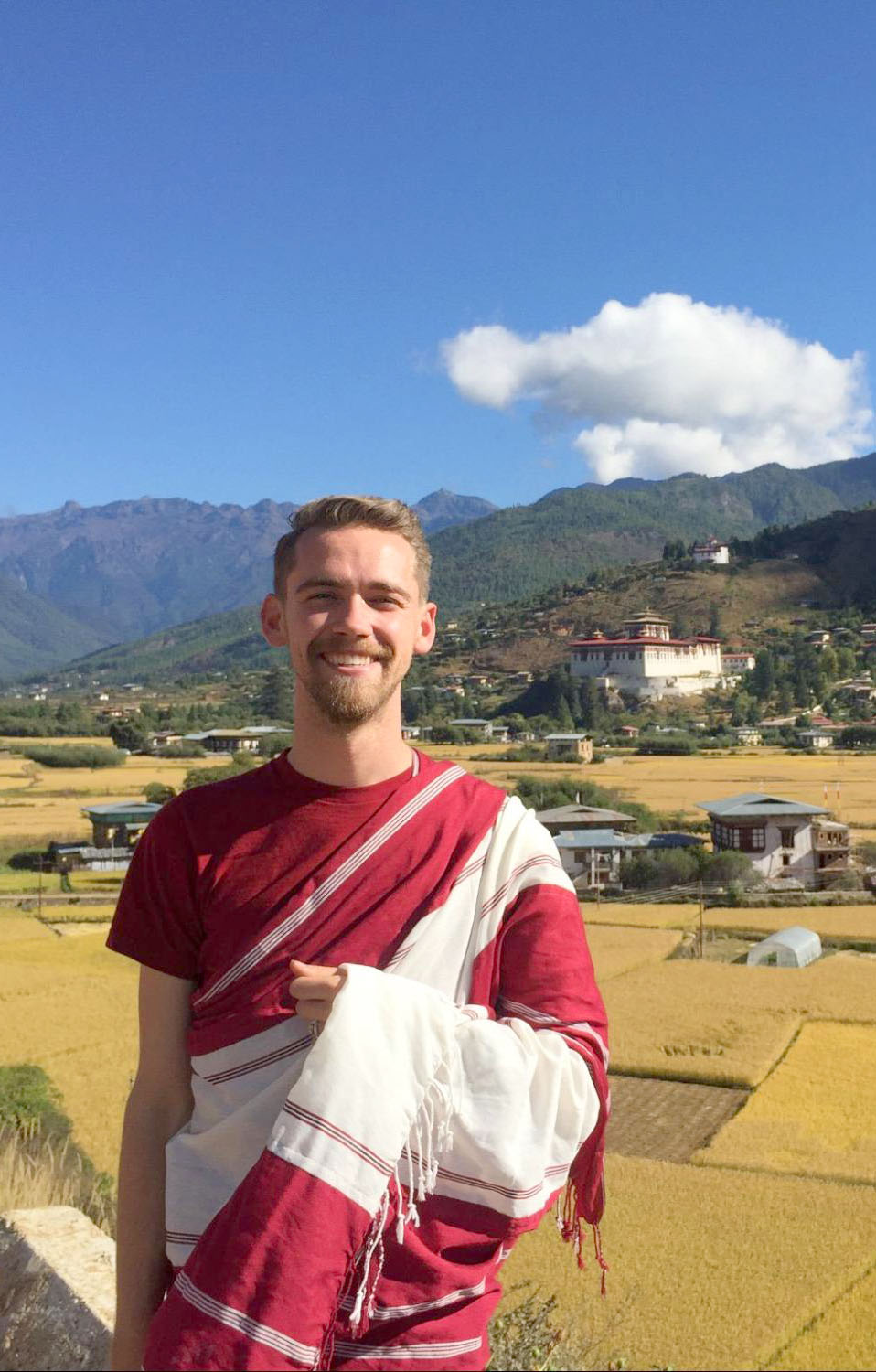
I am deeply grateful to Lama Tsultrim, Dr. Nida, and my other incredible teachers for their fearless dedication to the living Dharma, and for actively working to create an inviting space for marginalized individuals from all backgrounds. We all still have a massive amount of work to do, but the seeds are always there. In my own life, whenever I’m confronted with the shortsightedness of my own privilege, I hope I can always respond with the unflinching compassion that I experienced from a simple Bhutanese yogi.
Happy Pride!
Erik Jampa Andersson is a practitioner and instructor of Sowa Rigpa (Traditional Tibetan Medicine) and the Yuthok Nyingthik. He is one of the few westerners to have completed a comprehensive education in the Gyu-zhi (Four Medical Tantras), as well as practical training in Tibetan herbalism, clinical treatment, and astrology. He established his clinical practice in Los Angeles in 2017, but has since moved across the pond to England, where he is now the director of Shrīmālā Healing Arts and resident teacher at Sorig Khang London … Click to read more »
Photos from Erik Jampa Andersson

